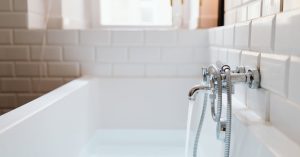Plumbing Inspection Checklist: Tips and Tricks for DIYers

Before you start any plumbing project in your Saskatoon home, it’s essential to carry out a thorough inspection of your entire plumbing system. This inspection will help you identify any potential issues that may require immediate attention.
Start by examining your water meter and gauging how much water your household consumes regularly. Check for any visible leaks from the pipes or appliances such as the faucet, showerhead, or toilet tank. Inspect the exposed pipes under sinks, basements, and crawl spaces for signs of damage or corrosion. Check if all the valves work correctly and are not leaking. Make sure that all drainages are working well without any blockage.
A comprehensive plumbing inspection checklist will ensure that you don’t miss anything important before starting a plumbing repair project. A thorough inspection can save you time and money by catching small problems early before they turn into more significant issues. Check out these other tips and tricks for DIYers:
Steps to Fixing Common Saskatoon Home Plumbing Issues
Plumbing issues are inevitable, and they can be frustrating when they occur. However, some common plumbing problems can be fixed by a DIYer with the right tools and knowledge. Here are some steps to take when fixing common plumbing issues in Saskatoon:
Clogged Drains
The most common plumbing problem is a clogged drain. A clogged drain can cause water to back up, leading to flooding and other damage. To fix this issue, start by removing any visible debris from the drain. Next, pour hot water down the drain to loosen any remaining blockages. If that doesn’t work, try using a plunger or a drain auger to dislodge the blockage.
Dripping Faucets
A dripping faucet is not only annoying but can also lead to high water bills over time. To fix this issue, start by turning off the water supply under the sink or at the main valve in your home. Next, unscrew the handle of the faucet and remove it along with its stem assembly. Inspect all parts for damage or wear and tear before replacing any parts that are no longer functional.
Toilet Issues
If your toilet is running continuously or not flushing correctly, try adjusting the chain or flapper valve inside of it first before calling a plumber. Oftentimes times these simple adjustments will solve these common issues.
Remember always turn off your water supply before attempting any plumbing repair on your own!
Maintaining Your Saskatoon Home Plumbing: Tips and Tricks for DIYers
To ensure your home plumbing system in Saskatoon remains in good condition, it’s essential to maintain it regularly. Maintenance is critical for preventing costly plumbing issues from developing and extending the life of your plumbing system. Here are some tips and tricks to help you maintain your Saskatoon home plumbing:
Firstly, make sure that you check your pipes periodically for leaks and corrosion. Leaks can cause serious damage to your property, leading to mold growth or even structural damage. Therefore, always be alert for signs of leaks such as damp spots on walls or ceilings, musty smells, or sudden spikes in water bills.
Secondly, avoid using harsh chemicals when cleaning the drain since they can corrode the pipes over time and lead to bigger plumbing issues. Instead, try using natural cleaners like baking soda and vinegar to clean the drains regularly.
Lastly, invest in a water softener system as hard water tends to cause mineral buildup inside your plumbing fixtures over time which may result in blockages or clogs. With a water softener system installed by a professional plumber, you can ensure that your water supply is free from harmful minerals.
Follow these simple tips and tricks for maintaining your Saskatoon home plumbing regularly, you can prevent costly disasters down the line while also extending the lifespan of your plumbing system.
Plumbing Safety Tips Every DIYer in Saskatoon Should Know
Plumbing projects can be dangerous for DIYers who don’t take proper safety precautions. Here are some tips to keep you safe while working on your plumbing system:
1. Always wear protective gear, such as gloves and safety glasses, when working with plumbing tools or chemicals. This will help protect your hands and eyes from any potential risks.
2. Turn off the water supply before starting any projects that involve cutting pipes or removing fixtures. This will prevent flooding and other water damage in your home.
3. Use caution when working with hot water or steam, as these can cause serious burns if not handled properly. Be sure to let the water cool down before attempting any repairs.
4. Never attempt to repair gas pipes yourself – this is extremely dangerous and should always be left to a licensed professional.
5. If you’re unsure about how to proceed with a plumbing project, don’t hesitate to call in a professional plumber for assistance.
By following these safety tips, you can help ensure that your DIY plumbing projects are completed safely and without incident. If you find that the plumbing issue is bigger than you thought, you can always count on Perfection Plumbing to be there for you.
